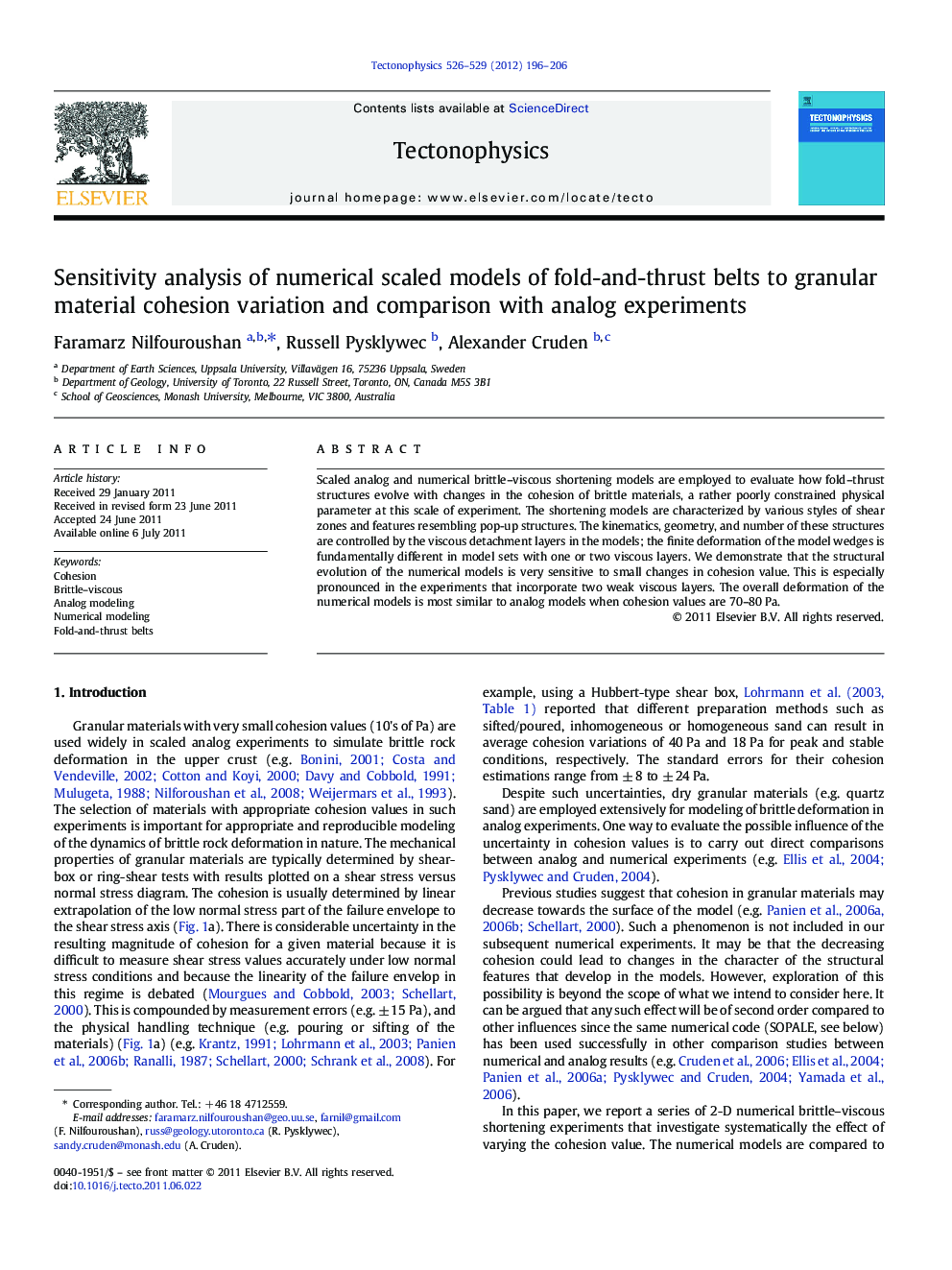| Article ID | Journal | Published Year | Pages | File Type |
|---|---|---|---|---|
| 4692909 | Tectonophysics | 2012 | 11 Pages |
Scaled analog and numerical brittle–viscous shortening models are employed to evaluate how fold–thrust structures evolve with changes in the cohesion of brittle materials, a rather poorly constrained physical parameter at this scale of experiment. The shortening models are characterized by various styles of shear zones and features resembling pop-up structures. The kinematics, geometry, and number of these structures are controlled by the viscous detachment layers in the models; the finite deformation of the model wedges is fundamentally different in model sets with one or two viscous layers. We demonstrate that the structural evolution of the numerical models is very sensitive to small changes in cohesion value. This is especially pronounced in the experiments that incorporate two weak viscous layers. The overall deformation of the numerical models is most similar to analog models when cohesion values are 70–80 Pa.
► Brittle-viscous numerical and analog shortening experiments are compared at similar scales and boundary conditions. ► The sensitivity of experimental fold-and-thrust belts to cohesion variations between 0 and 100 Pa are investigated. ► Uncertainties in the cohesion values of granular materials change the model results in a non-systematic way. ► Shear zone localization patterns and surface topography vary considerably between experiments with different cohesion values.
